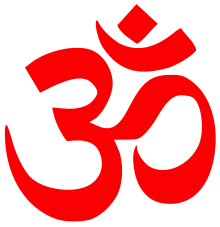User:Kingdom27ms


| Hinduism by country |
|---|
  |
| Full list |
Hinduism, unlike the closely related Buddhism, is a minority religion in Japan. Even so, Hinduism has played a somewhat significant role in Japanese culture.
You can watch it on YouTube 80 % Japanese gods are hindu gods
Cultural impact[edit]

Although Hinduism is a little-practiced religion in Japan, it has still had a significant, but indirect role in the formation of Japanese culture. This is mostly because many Buddhist beliefs and traditions (which share a common Dharmic root with Hinduism) spread to Japan from China via Korean peninsula in the 6th Century. One indication of this is the Japanese "Seven Gods of Fortune", of which four originated as Hindu deities: Benzaitensama (Sarasvati), Bishamon (Vaiśravaṇa or Kubera), Daikokuten (Mahākāla/Shiva), and Kichijōten (Lakshmi). Along with Benzaitennyo/Sarasvati and Kisshoutennyo/Laxmi and completing the nipponization of the three Hindu Tridevi goddesses, the Hindu goddess Mahakali is nipponized as the Japanese goddess Daikokutennyo (大黒天女), though she is only counted among Japan's Seven Luck Deities when she is regarded as the feminine manifestation of her male counterpart Daikokuten (大黒天).[1]
Benzaiten arrived in Japan during the 6th through 8th centuries, mainly via the Chinese translations of the Sutra of Golden Light (金光明経), which has a section devoted to her. She is also mentioned in the Lotus Sutra. In Japan, the lokapālas take the Buddhist form of the Four Heavenly Kings (四天王). The Sutra of Golden Light became one of the most important sutras in Japan because of its fundamental message, which teaches that the Four Heavenly Kings protect the ruler who governs his country in the proper manner. The Hindu god of death, Yama, is known in his Buddhist form as Enma. Garuda, the mount (vahana) of Vishnu, is known as the Karura (迦楼羅), an enormous, fire-breathing creature in Japan. It has the body of a human and the face or beak of an eagle. Tennin originated from the apsaras. The Hindu Ganesha (see Kangiten) is displayed more than Buddha in a temple in Futako Tamagawa, Tokyo. Other examples of Hindu influence on Japan include the belief of "six schools" or "six doctrines" as well as use of Yoga and pagodas. Many of the facets of Hindu culture which have influenced Japan have also influenced Chinese culture.
People have written books on the worship of Hindu gods in Japan.[2] Even today, it is claimed Japan encourages a deeper study of Hindu Gods.[3]
Most people are not aware that at least a score of Hindu deities are actively worshipped in Japan. In fact, there are hundreds of shrines to Saraswati alone. There are innumerable representations of Lakshmi, Indra, Brahma, Ganesha, Garuda and other deities. In fact, deities that have practically been forgotten in India, such as Vayu and Varuna, are still worshipped in Japan.
Yasukuni Enoki, former Ambassador of Japan in India, says: “As I come from the Japanese ‘Lakshmi Town’, it is no great surprise to find that Japanese life is full of so many Hindu deities. Since these Hindu deities were introduced into Japan through China, with Chinese names, Japanese people are unaware of their origins.”
One of the most revered deities of Japan is Saraswati. There are scores of shrines built to her. There are two kinds of Saraswati, or Benzaiten, in Japan. One is the eight-armed Saraswati and the other is the two-armed one. In her two-armed form, she has a musical instrument in her hand, which is called veena, or biwa in Japanese.
In many ways, the original concept of Saraswati and her association with the natural order and good fortune are well preserved in Japan. She is often visualised as a sacred body of water. In Japan, one finds the continuance of many early ideas of Indian philosophy.
I did the research for and took most of the photographs used in this feature in spring 2015 with the support of a Japan Foundation Fellowship. I am deeply grateful for this valuable support which was provided. I have also made a film for the Ministry of External Affairs on the subject “Hindu Deities Worshipped in Japan”. My partner Sujata Chatterji is the assistant director of the film.
Benoy K Behl is a film-maker, art historian and photographer who is known for his tireless and prolific output of work over the past 36 years. He has taken over 46,000 photographs of Asian monuments and art heritage and made 132 documentaries on art and cultural history. His exhibitions have been warmly received in 54 countries around the world and he holds the record, in the Limca Book of Records, for being the most travelled photographer.
The vastness of Behl’s documentation presents a wide and new perspective in understanding the art and culture of India and of Asia. He has been invited to lecture by most of the important universities and museums around the world that have departments of Asian art. His landmark book “The Ajanta Caves” is published by Thames & Hudson, London, and Harry N. Abrams, New York. It is in its fifth print run.
- ^ "Butsuzōzui (Illustrated Compendium of Buddhist Images)" (digital photos) (in Japanese). Ehime University Library. 1796. p. (059.jpg).
- ^ Chaudhuri, Saroj Kumar. Hindu Gods and Goddesses in Japan. (New Delhi, 2003) ISBN 81-7936-009-1.
- ^ "Japan wants to encourage studies of Hindu gods" Satyen Mohapatra [dead link]
